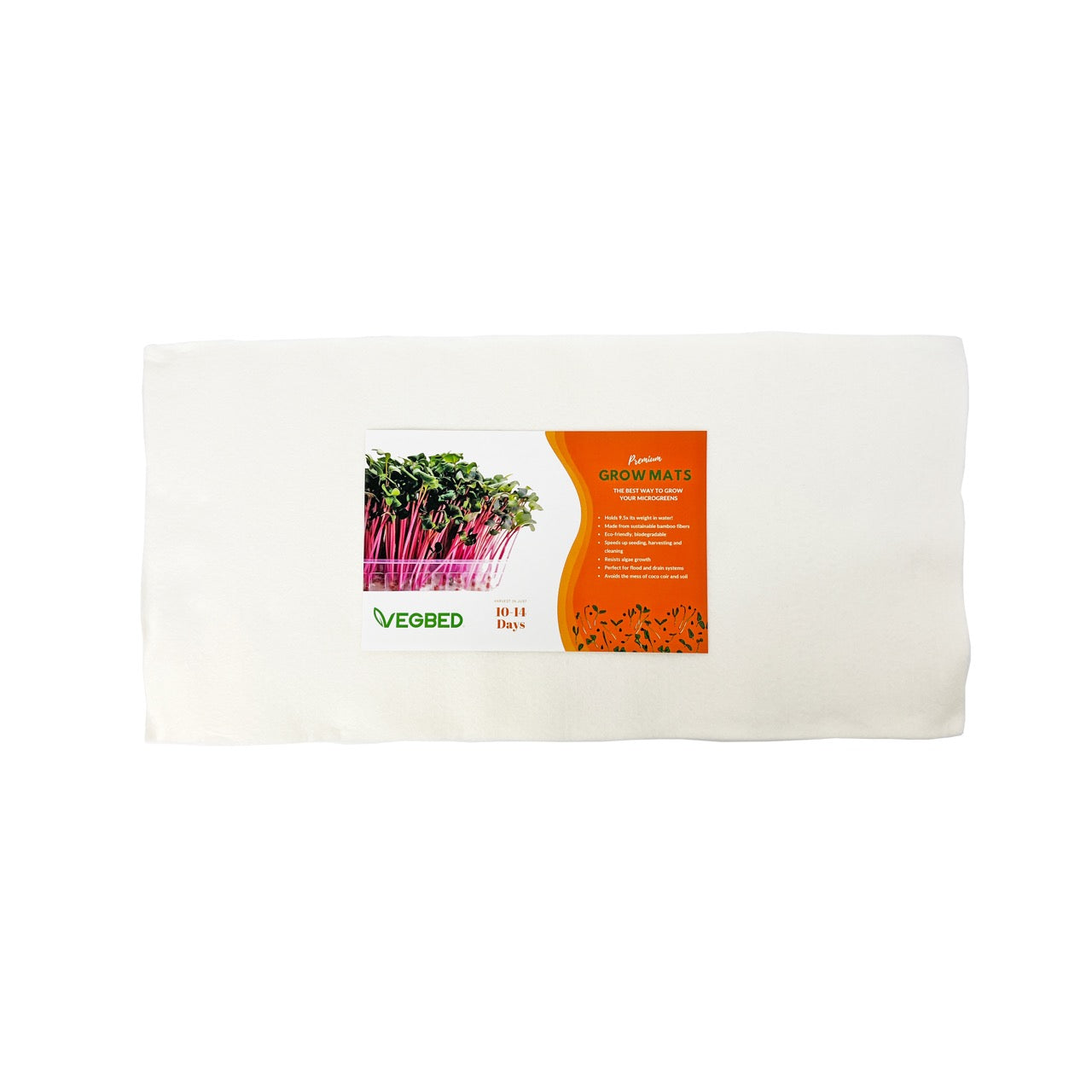In the realm of gastronomy, a small yet impactful addition is taking the culinary world by storm: microgreens.
These small wonders are causing quite a stir, swiftly becoming the darlings of chefs and restaurants everywhere.
Why, you ask? Well, these little beauties are changing the game with their robust flavors and stunning looks, turning bland plates into remarkable culinary experiences.
Flavor Explosion in Every Bite
One thing's for sure – these microgreens aren't messing around when it comes to taste.
Each type boasts its own unique flavor profile, from the peppery zing of arugula to the tangy goodness of mustard and the fresh earthiness of basil. Imagine layering these flavors to create a symphony in your mouth – that's the magic of microgreens.
Some popular microgreens used in culinary settings include:
Arugula: Adds a peppery taste.
Basil: Offers a sweet and slightly spicy flavor.
Cilantro: Provides a fresh and citrusy taste.
Kale: Known for its earthy, slightly bitter flavor.
Radish: Offers a spicy kick.
Sunflower: Adds a nutty taste.
Pea shoots: Have a mild, sweet flavor.
Broccoli: Provides a mild, slightly peppery taste.
Mustard greens: Offer a spicy, tangy flavor.
Visual Treats on Your Plate
It's not just about the taste; microgreens are the secret to making dishes look stunning. With their delicate leaves and vibrant colors, they add that Instagram-worthy appeal to any plate.
Chefs use these little gems as gorgeous garnishes, adding that perfect pop of color and artistic touch to their creations.
From Salad Boosters to Culinary Stars
Gone are the days when these greens were just sprinkled on salads. They've graduated to become essential ingredients, adding depth and character to soups, sandwiches, and main courses. Microgreens bring a fresh, sophisticated touch to any dish.
Culinary Innovations with Microgreens
Chefs are rewriting the rules by exploring innovative ways to use microgreens.
From whipping up unique sauces to making them the star of the show, microgreens are at the center of culinary experiments. It's incredible to see how they are shaping and redefining the culinary landscape.
Chefs adore these greens for their nutrition, freshness, and ease of cultivation. They're the perfect canvas for them to experiment with and bring out their culinary genius. Being able to add a healthy component is a bonus.
Vegbed's Role in the Culinary Scene
The demand for microgreens growing using Vegbed's innovative growing medium is skyrocketing. These grow mats help empower the culinary world, offering a clean, efficient way to produce top-notch microgreens that meet the high standards of fine dining.
Microgreens as a Superfood
Microgreens not only add a burst of flavor and visual appeal to your culinary creations but also contribute significantly to their health benefits. These greens are brimming with essential nutrients, making them a nutritious choice for enhancing the nutritional profile of your meals. Here's why incorporating microgreens in your culinary endeavors is a healthy choice:
Nutrient-Rich Additions: Despite being small, microgreens are loaded with a high concentration of essential vitamins, minerals and antioxidants. Incorporating them into your dishes increases total nutrient density, giving a nutrition wallop.
Vitamins and Minerals Galore: Microgreens are very good sources of essential vitamins such as C, E and K in addition to vital minerals like iron, zinc and potassium. The inclusion of different types of microgreens in your meals adds to an overall balanced nutrition intake.
Antioxidant Powerhouse: Microgreens are abundant in antioxidants that help to neutralize free radicals, therefore supporting the overall health of cells and possibly preventing chronic diseases.
Heart-Healthy Options: Some microgreens such as broccoli have compounds that are tied to improving heart health. It may keep cholesterol levels healthy when consumed regularly.
Digestive Support: Microgreens support healthy digestion and contribute to a good gut environment due to the proper amount of dietary fiber. The fiber content contributes to normal bowel movements and general gut health.
Low-Calorie Nutritional Boost: Microgreens are normally very low in calories hence, they can be perfect when seeking to enrich your meal with nutrients yet not consume a lot of calories at the same time.
The Nutritional Profiles of Key Microgreens
- Broccoli Microgreens: Rich in sulforaphane, a compound with potent anti-cancer properties. High levels of vitamins A, C, and K, promote skin health and support immune function.
- Kale Microgreens: Abundant in iron, calcium, and vitamin K for bone health. Packed with lutein and zeaxanthin, supporting eye health and preventing age-related macular degeneration.
- Sunflower Microgreens: Excellent source of vitamin E, a powerful antioxidant that protects cells from damage.High in essential fatty acids, promoting cardiovascular health.
- Pea Shoots: Rich in vitamin C, boosting the immune system. High levels of folate, are crucial for cell division and DNA synthesis.
- Radish Microgreens: Contains isothiocyanates with anti-inflammatory and anti-cancer properties. High in fiber, aiding digestion and promoting a healthy gut.
Closing Thoughts
Microgreens are here to stay, adding a burst of flavor, a splash of color, and a healthy twist to the ever-evolving world of culinary arts.
Whether you're trying to jazz up a salad or transform a main course, these tiny greens promise a vibrant, flavorful addition to all dishes. Cheers to culinary creativity and the wonders of microgreens!



